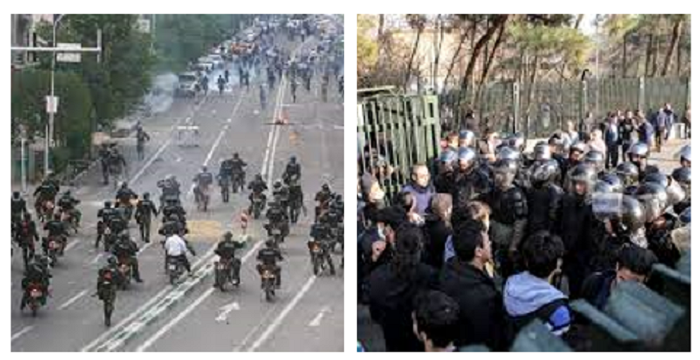
As the regime tightens its grip on power, it appears to be preparing for potential unrest, drawing lessons from the nationwide uprisings of 2017, 2019, and 2022.
In a candid admission on national television on January 27, regime insiders lamented the restrictive nature of the electoral process, highlighting the disqualification of an overwhelming majority of cleric candidates. Out of an estimated 150,000 to 200,000 clerics, only 140-150 were deemed eligible to compete, exposing a system that effectively sidelines 99.8% of potential cleric candidates.
The state-run Etemad newspaper further criticized the electoral process on January 28, especially pointing out the disqualification of President Ebrahim Raisi’s rivals in South Khorasan. The paper described these actions as emblematic of a broader issue plaguing all elections within the country, where the absence of genuine competition has turned the electoral process into a subject of ridicule, both domestically and internationally.
The exclusion of former President Hassan Rouhani from the electoral race has sparked significant controversy, with critics warning of severe repercussions for the regime, both within Iran and on the international stage. Rouhani’s disqualification underscores a strategic dismantling of the electoral façade that Supreme Leader Ali Khamenei has maintained for years. This move not only eliminates a high-profile political figure but also signals the erosion of the electoral process itself, including the presidency’s symbolic value.

In the face of mounting challenges, Khamenei’s strategy of “purification” seeks to consolidate power among loyalists, a move perceived as necessary to withstand the inevitable storms ahead.
The disqualification has been met with mixed reactions within Khamenei’s faction, with some members openly celebrating the decision, while others call for Rouhani’s prosecution for alleged betrayals. This internal division reflects a regime grappling with increasing pressures, both from within and from an international community watching closely.
These events have demonstrated the growing dissatisfaction and organized resistance among the Iranian populace, with many calling for an end to the current regime. However, this approach may only serve to deepen the fissures within Iranian society, setting the stage for a confrontation that could reshape the future of the nation.

As the regime tightens its grip on power, it appears to be preparing for potential unrest, drawing lessons from the nationwide uprisings of 2017, 2019, and 2022.
The upcoming elections, therefore, stand as a critical juncture for Iran, with the regime’s legitimacy and the people’s will on a collision course. The outcome of this conflict could determine the path of Iran’s political landscape for years to come, as calls for revolution grow louder and the desire for genuine democratic reform becomes impossible to ignore.
.

MEK Iran (follow us on Twitter and Facebook), Maryam Rajavi’s on her site, Twitter & Facebook, NCRI (Twitter & Facebook), and People’s Mojahedin Organization of Iran – MEK IRAN – YouTu
